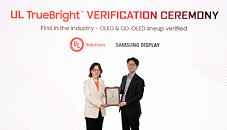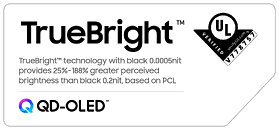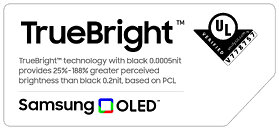
Samsung Display Achieves Industry-First True Bright Marketing Claim Verification from UL Solutions
Samsung Display today announced that the company has earned Marketing Claim Verification from global safety science company UL Solutions for claims related to perceived brightness. This marks the first time UL Solutions has issued a Marketing Claim Verification for a technology that leverages PCL calculations.
To achieve UL Solutions' Marketing Claim Verification, Samsung's True Bright, which is a distinction Samsung gives to displays that provides greater perceived brightness when compared to LCDs of the same PCL score, was evaluated for Perceptual Contrast Length (PCL) to quantify the brightness of the black of a display. PCL, which has been adopted as an industry standard by SEMI, refers to the brightness of a display specifically as perceived by the human eye. This metric acknowledges that perceived brightness is influenced not only by the physical light emitted by the panel but also by its contrast ratio. OLED displays typically have a contrast ratio of 1,000,000:1—over a thousand times that of standard LCDs. The enhanced contrast of OLEDs ensures that the same image is perceived as brighter when compared to LCD displays.
To achieve UL Solutions' Marketing Claim Verification, Samsung's True Bright, which is a distinction Samsung gives to displays that provides greater perceived brightness when compared to LCDs of the same PCL score, was evaluated for Perceptual Contrast Length (PCL) to quantify the brightness of the black of a display. PCL, which has been adopted as an industry standard by SEMI, refers to the brightness of a display specifically as perceived by the human eye. This metric acknowledges that perceived brightness is influenced not only by the physical light emitted by the panel but also by its contrast ratio. OLED displays typically have a contrast ratio of 1,000,000:1—over a thousand times that of standard LCDs. The enhanced contrast of OLEDs ensures that the same image is perceived as brighter when compared to LCD displays.


































































